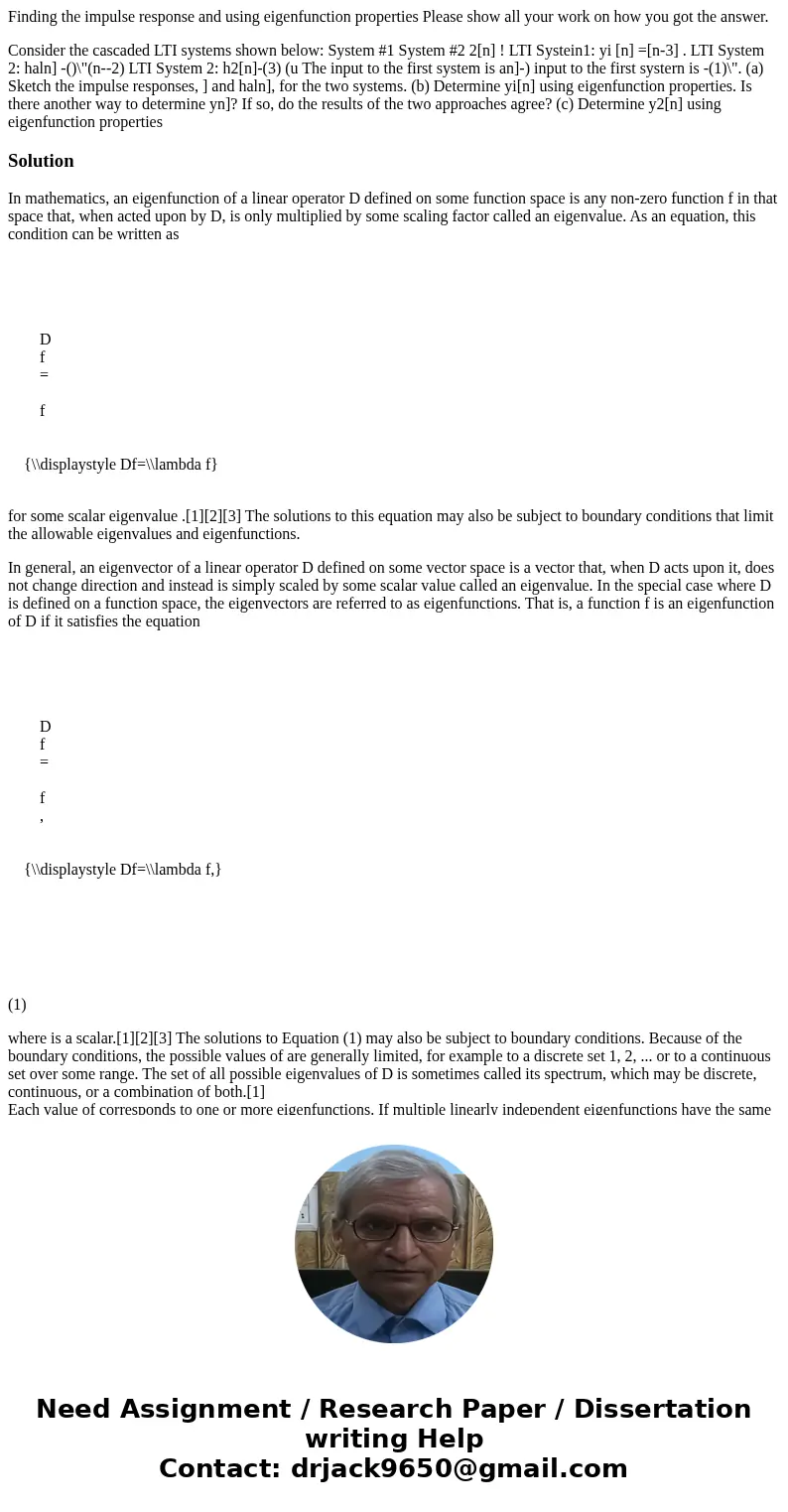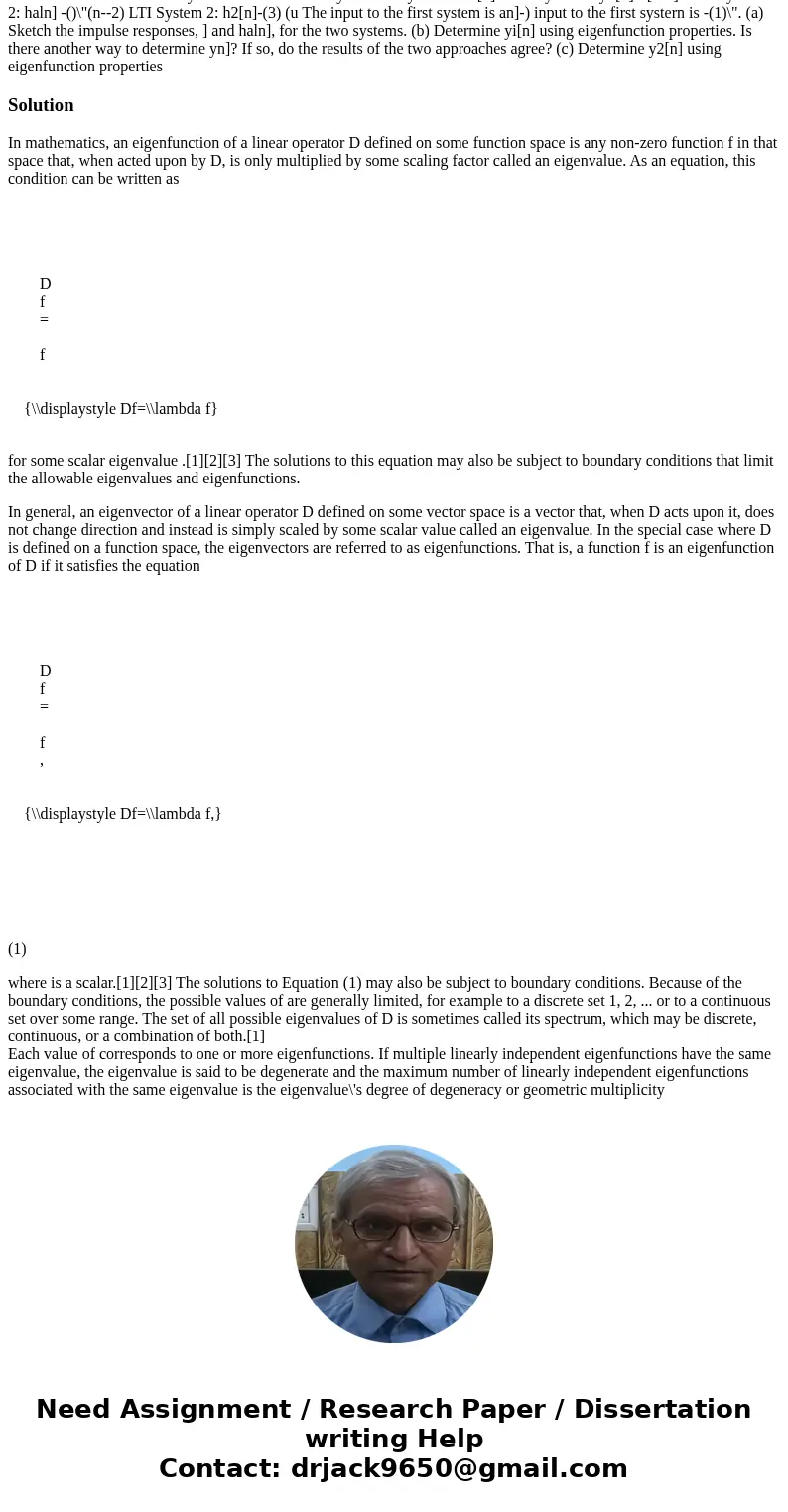Finding the impulse response and using eigenfunction propert
Finding the impulse response and using eigenfunction properties Please show all your work on how you got the answer.
Consider the cascaded LTI systems shown below: System #1 System #2 2[n] ! LTI Systein1: yi [n] =[n-3] . LTI System 2: haln] -()\"(n--2) LTI System 2: h2[n]-(3) (u The input to the first system is an]-) input to the first systern is -(1)\". (a) Sketch the impulse responses, ] and haln], for the two systems. (b) Determine yi[n] using eigenfunction properties. Is there another way to determine yn]? If so, do the results of the two approaches agree? (c) Determine y2[n] using eigenfunction propertiesSolution
In mathematics, an eigenfunction of a linear operator D defined on some function space is any non-zero function f in that space that, when acted upon by D, is only multiplied by some scaling factor called an eigenvalue. As an equation, this condition can be written as
D
f
=
f
{\\displaystyle Df=\\lambda f}
for some scalar eigenvalue .[1][2][3] The solutions to this equation may also be subject to boundary conditions that limit the allowable eigenvalues and eigenfunctions.
In general, an eigenvector of a linear operator D defined on some vector space is a vector that, when D acts upon it, does not change direction and instead is simply scaled by some scalar value called an eigenvalue. In the special case where D is defined on a function space, the eigenvectors are referred to as eigenfunctions. That is, a function f is an eigenfunction of D if it satisfies the equation
D
f
=
f
,
{\\displaystyle Df=\\lambda f,}
(1)
where is a scalar.[1][2][3] The solutions to Equation (1) may also be subject to boundary conditions. Because of the boundary conditions, the possible values of are generally limited, for example to a discrete set 1, 2, ... or to a continuous set over some range. The set of all possible eigenvalues of D is sometimes called its spectrum, which may be discrete, continuous, or a combination of both.[1]
Each value of corresponds to one or more eigenfunctions. If multiple linearly independent eigenfunctions have the same eigenvalue, the eigenvalue is said to be degenerate and the maximum number of linearly independent eigenfunctions associated with the same eigenvalue is the eigenvalue\'s degree of degeneracy or geometric multiplicity


 Homework Sourse
Homework Sourse